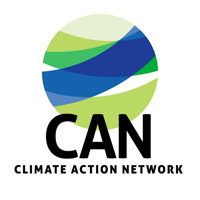
News |
- Manitoba Deserves Transparency on Energy East
- Manitoba Budget 2015
- Vatican: Time for Action on Climate Justice
- Tarsands To Invade West Coast
- CEOs Call for Paris Deal - Jurists Release Principles
- Marilyn Baptiste - North America 2015 Goldman Prize
- Federal Budget Canada 2015
- Canadians Want Climate Action Before Oil - National Poll
- Manitoba Energy East Questions Not Answered
- Time To Look At Alberta For Real
- Microbeads Should Be Banned: NDP
- New Peat Licence Issued Despite Moratorium
| Manitoba Deserves Transparency on Energy East | 8 May 15 |

Source: Winnipeg Sun
“People in this province need to hear about the tremendous investment this proposed pipeline needs from us in Manitoba,” said Eric Reder, Manitoba Campaign Director for the Wilderness Committee. “The large pumping stations needed to push bitumen across Manitoba will require 176 megawatts of power. This is roughly as much as the Wuskwatim dam generates.” Alex Paterson of the Manitoba Energy Justice Coalition said what’s missing in the debate over Energy East is how Manitoba Hydro fits into the building of a national oil pipeline. "We have a right to clear and informed information about the implications of our energy decisions in the province," Paterson said. "It also means that Manitobans of any stripe collectively deserve a right to say ‘no’ to any energy project." Gaile Whelan-Enns, Manitoba WIldlands Director, said, “It’s time for Manitoba’s government to admit how many leases, work permits, water permits, and environmental licences they would issue to Energy East.’
View May 8, 2015 DeSmog Canada article |
|
 Print version Print version |
Top |
| Manitoba Budget 2015 | 1 May 15 |

The brochure for the budget indicates that Manitoba intends to leverage $ 1B Cdn over five years to ‘enhance water quality’, and return Lake Winnipeg to its former function and health. While the Clean Environment Commission is considering its recommendations about regulation of Lake Winnipeg water levels, and providing Manitoba Hydro with a final licence, this budget acknowledges Lake Winnipeg needs scientific and environmental programs, and funding. Funds to modernize Spruce Woods Park, Birds Hill Park, and Grand Beach provincial parks are included in 2015-16 expenditures. The budget speech also indicates that there will be continued funding for First Nation lands planning – which are often for territories located in boreal forest regions. A climate change fund will assist companies to reduce their emissions and create green jobs in the transportation and agriculture sectors. Infrastructure investments are going to further flood proofing efforts and expand wetlands – both relevant in the face of repeated and increasing flood events in Manitoba.
View Manitoba Budget press releases |
|
 Print version Print version |
Top |
| Vatican: Time for Action on Climate Justice | 1 May 15 |

"Mitigating climate change and adapting to its effects are necessary to eradicate extreme poverty, reduce inequality and secure equitable, sustainable economic development," said Ban Ki Moon, U.N. secretary-general, in the keynote speech. "This is an all-embracing moral imperative: to protect and care for both creation, our garden home, and the human person who dwells herein — and to take action to achieve this," said Cardinal Peter Turkson, who heads the Pontifical Council for Justice and Peace. In September, the pope is scheduled to address Congress, as well as a United Nations summit meeting on sustainable development, where he is expected to reiterate his environmental message. The pope has said that climate change is “mostly” a result of human activity. Pope Francis is not the first pope to address environmental issues, but his encyclical is expected to be the most comprehensive Vatican document so far on the links between sustainable development, concern for the poor and care of the planet.
View May 1, 2015 The Columbus Dispatch article |
|
 Print version Print version |
Top |
| Tarsands To Invade West Coast | 1 May 15 |

The new report notes that if current plans for infrastructure to handle tar sands oil transportation proceed, “tar sands refining on the West Coast could increase eightfold, from about 100,000 barrels per day in 2013 to nearly 800,000 bpd in coming decades.” To put this in perspective, this is approximately the amount the proposed TransCanada KXL pipeline would transport to the U.S. Gulf Coast. “The West Coast is about to fall victim to a tar sands invasion, unless our leaders choose to protect the health and safety of our communities and say no to Big Oil,” said Anthony Swift, deputy director of NRDC's Canada Project. “At a time when the nation is moving toward a clean energy future, there is no reason to welcome the dirtiest oil on the planet into our communities.”
View April 29, 2015 DeSmogBlog article |
|
 Print version Print version |
Top |
| CEOs Call for Paris Deal - Jurists Release Principles | 24 April 15 |

More recently a global group of corporate CEOs have issued a strong call for a new international climate deal to come from the December Paris negotiations, and lead up conference to prepare for Paris. They appear to support the UN Secretary General’s call for “a collective agreement binding the international community to a zero-carbon world by the end of the century; individual countries coming up with their own plans; a financing package that by 2020 would provide poor countries with $100bn (£68bn) to help them adapt to climate change and mitigate its effects and a stronger role for the private sector to use its innovative skills to find ways of reducing emissions.” The CEOs issued an open letter, and made commitments to cut their companies’ emissions. The group of 43 chief executives, said they would set internal emission reduction targets and called on negotiators to make sure a new international climate deal limits the global rise in temperatures to below 2 degrees Celsius. (Link to letter below.) Most governments missed the March 31 deadline to submit their emission reduction targets for the Paris negotiations, to the UN. Canada has indicated that it will not file emission reduction targets until the G8 meets in summer 2015. Companies signing the CEOs letter include cement maker Lafarge, telecom group Erikson, consumer goods company Unilever, and car maker Volvo
View April 16, 2015 Reuters article |
|
 Print version Print version |
Top |
| Marilyn Baptiste - North America 2015 Goldman Prize | 24 April 15 |

Marilyn Baptiste, A former chief of the Xeni Gwet’in First Nation, led her community in defeating one of the largest proposed gold and copper mines in British Columbia – the Prosperity Mine. The project that would have destroyed Fish Lake — a source of spiritual identity and livelihood for the Xeni Gwet’in. The Xeni Gwet’in, also known as the Nemiah Valley Indian Band, is one of six Tsilhqot’in First Nations. For generations, they have been steadfast protectors of their territory and the surrounding pristine environment of forests, lakes, streams and diverse wildlife such as bighorn sheep, grizzly bears, wild salmon and wild rainbow trout. The Xeni Gwet’in territory became ground zero in Vancouver-based Taseko Mines Limited (TML)’s long quest to build Prosperity Mine. Baptiste has followed in her father’s footsteps in the fight for her community’s rights. She worked her way up at the First Nation’s legal center, and in January 2008, she was elected chief of the Xeni Gwet’in. She also co-founded First Nations Women Advocating Responsible Mining (FNWARM), in the thick of TML’s relentless pursuit of the Prosperity Mine project.
View Marilyn Baptiste bio on The Goldman Environmental Prize website |
|
 Print version Print version |
Top |
| Federal Budget Canada 2015 | 24 April 15 |

A lot of funding is earmarked for cleaning up government sites and toxic chemicals – but nothing referring to climate change initiatives. Even a modest $300 million promised last November for the Green Climate Fund, designed to help developing countries tackle climate change, was nowhere to be found. As the world mobilizes to build a cleaner future, Canada is at risk of being left behind in the new green economy while alienating partners around the world. Given there is new clear evidence oil producers had a direct line to the Prime Minister’s Office through now disgraced Senator Mike Duffy, the lack of climate change initiatives in the 2015 Federal Canadian budget does not surprise. Some relevant highlights of the Canadian budget include;
View Canadian Centre for Policy Alternatives 2015 Federal Budget Analysis |
|
 Print version Print version |
Top |
| Canadians Want Climate Action Before Oil - National Poll | 12 April 15 |

The national random sample telephone poll of 3,040 Canadians was conducted for Climate Action Network Canada (CAN-Canada) by Oracle Research Limited from March 12 to 30, 2015. The margin of error for the total 3040-person survey is +/- 1.78%, 19/20 times. In addition to national summary totals, poll results were analysed by gender, province and voter intention. “Canadians are looking for political leadership. We will bring our feet and voices to the need to Act on Climate in a march on April 11 in Québec City. Business, labour and environmental leaders will reinforce the possibilities at the Canadian Round Table on a Green Economy, April 13, and we expect provincial governments to tell the country what they will do to protect the climate. The federal government is missing in action. It is time for all federal and provincial leaders to take responsibility for doing their part to protect the climate, says Steven Guilbault, Senior Policy Director, Équiterre.” ‘We suggest everyone look at Manitoba’s raw numbers in this poll. Once again Manitobans are ahead of the curve on environmental issues,; says Gaile Whelan-Enns, Director of Manitoba Wildlands
View April 9, 2015 Natural Resources Defense Council blog post |
|
 Print version Print version |
Top |
| Manitoba Energy East Questions Not Answered | 12 April 15 |

Energy East's capacity would be 1.1 million barrels per day – adding a one-third increase in pipeline-network capacity. It is also 30 – 32 million tonnes of annual emissions, more than 1.5 times the emissions Manitoba generates a year. Environment Canada's projections for tar sands climate-pollution growth predict it would cancel out emission reductions made by all other parts of Canada's economy. TransCanada had more pipeline ruptures in the last 10 years than all other Canadian pipeline companies combined. When Energy East spills, the sheer capacity of the pipeline means it could be the largest pipeline oil spill in Canadian history. An oil spill like the one in the Kalamazoo River has the potential to pollute not just one river but the entire Red River Basin and the Hudson’s Bay Basin With energy stations along the way pushing the bitumen through the pipeline there is no answer on how long it would take to stop the pipeline if it ruptured. Manitoba Hydro would be providing transmission lines and energy stations to keep the pipeline operating across Manitoba, and may be counting on this revenue. The 50 year old bitumen pipeline would cross beneath or near critical Manitoba waterways including the Assiniboine River, Red River, Little Saskatchewan River and the Shoal Lake watershed. It would cross two metres below the aqueduct that supplies Winnipeg's drinking water.
View The Council of Canadians Energy East page |
|
 Print version Print version |
Top |
| Time To Look At Alberta For Real | 12 April 15 |

“Continued expansion of the tar sands would lead to emission increases that would swamp emission reductions from Ontario, even if Ontario was successful in implementing policies – like carbon pricing – that would allow the province to meet its 2020 carbon pollution target,” Dale Marshall, national program manager with Environmental Defence, said. Carbon pollution, because it is so intimately linked to energy development, must be an integral part of any energy strategy. The strategy will need to be cohesive, showing that energy development in Canada is consistent with climate commitments made by the provinces and the federal government, and with our global partners. Essentially, one province with 11 per cent of the population, driven by an industry representing just 2 per cent of Canada’s GDP, would have levels of carbon pollution that are 93 per cent of emissions in the rest of the country. That’s not a scenario that reflects any notion of fairness.
View April 9, 2015 Greenpeace blog post |
|
 Print version Print version |
Top |
| Microbeads Should Be Banned: NDP | 27 March 2015 |

Microbeads circle down the drain and are too small to be filtered out by wastewater treatment plants, so they flow right into our lakes and streams. Researchers have found 17,000 bits of these tiny plastic beads per square kilometer in the Great Lakes. The fish eat them. Then people and other wildlife eat the fish. Microbeads are too small to be filtered out by many municipal wastewater treatment plants, and can wash directly into our fresh water systems, rivers, lakes and oceans. Many treatment plants divert wastewater directly into local rivers during heavy rain, which puts micro-beads directly into the environment. “The growing problem of microbeads accumulating in our lakes, rivers and oceans must be solved,” Meredith Brown, environmental engineer and head of Ottawa Riverkeeper, said in a news release. Meanwhile the Ontario government has tabled regulations to ban microbeads in Ontario. “These tiny plastic particles are showing up in the guts of aquatic animals and in our beer.”
View Environmental Defence Microbeads information page |
|
 Print version Print version |
Top |
| New Peat Licence Issued Despite Moratorium | 27 March 2015 |

Manitoba’s vast peatlands are considered the province’s best natural defense against global warming, as they absorb a tremendous amount of climate-changing carbon. When peatlands are bulldozed, drained and harvested, they release the carbon being stored. The Manitoba government’s own peatland mining report, commissioned and completed by the International Institute for Sustainable Development, showed there was no adequate strategy to mitigate the release of carbon from peat mining. “There is only one way to keep Manitoba peat from accelerating climate change: leave the peat in the ground,” said Eric Reder, Manitoba Campaign Director for the Wilderness Committee. The Manitoba NDP government implemented a moratorium on peat mining on new quarry leases in the province in 2011 under the Save Lake Winnipeg Act. Since then new legislation has put new limitations on peat mining. Many peat leases were cancelled. The new peat expansion at Sunterra is being permitted because it is situated on old quarry leases.
View March 25, 2015 Wilderness Committee media release |
|
 Print version Print version |
Top |


 RSS Feeds:
RSS Feeds: